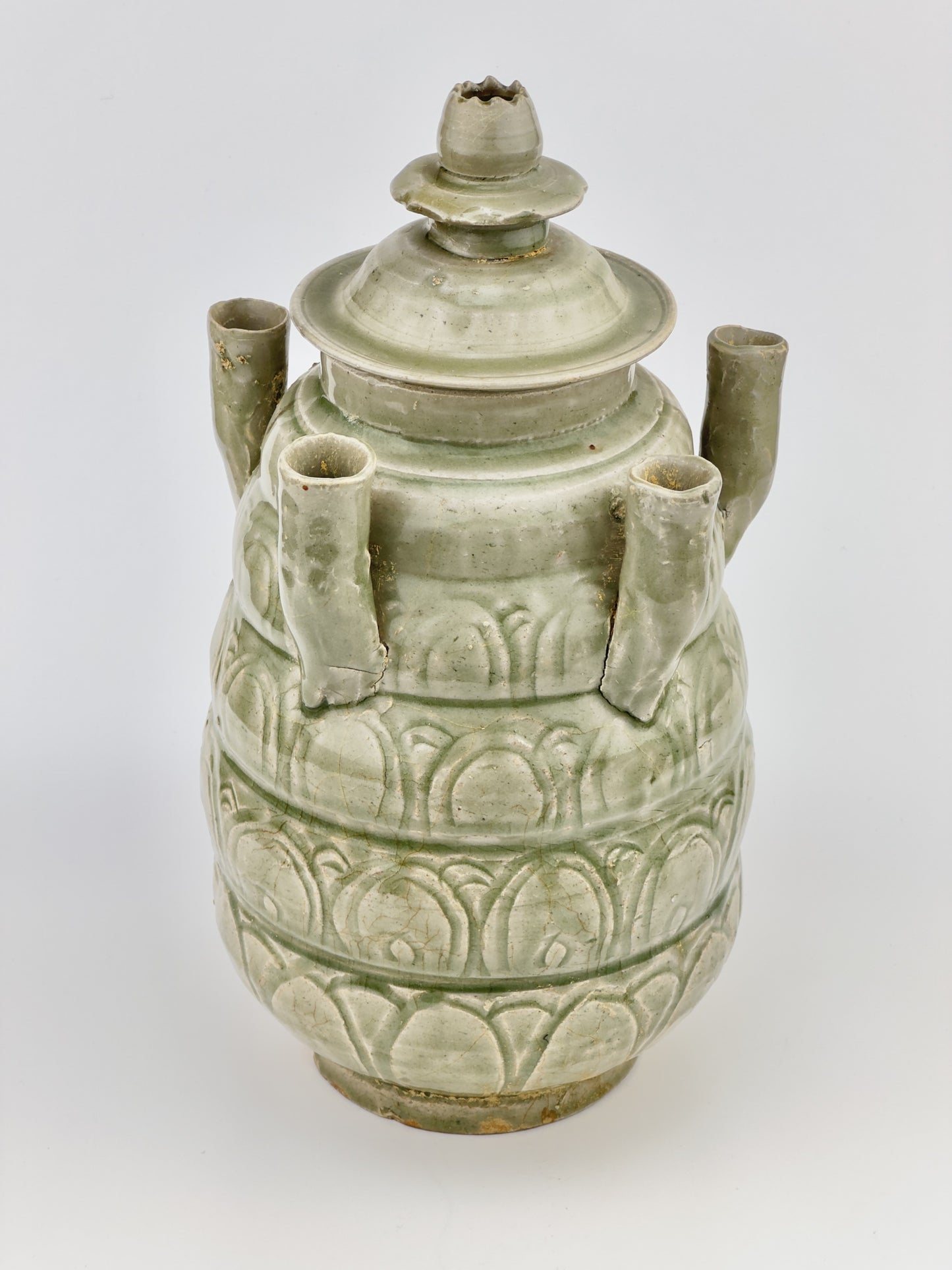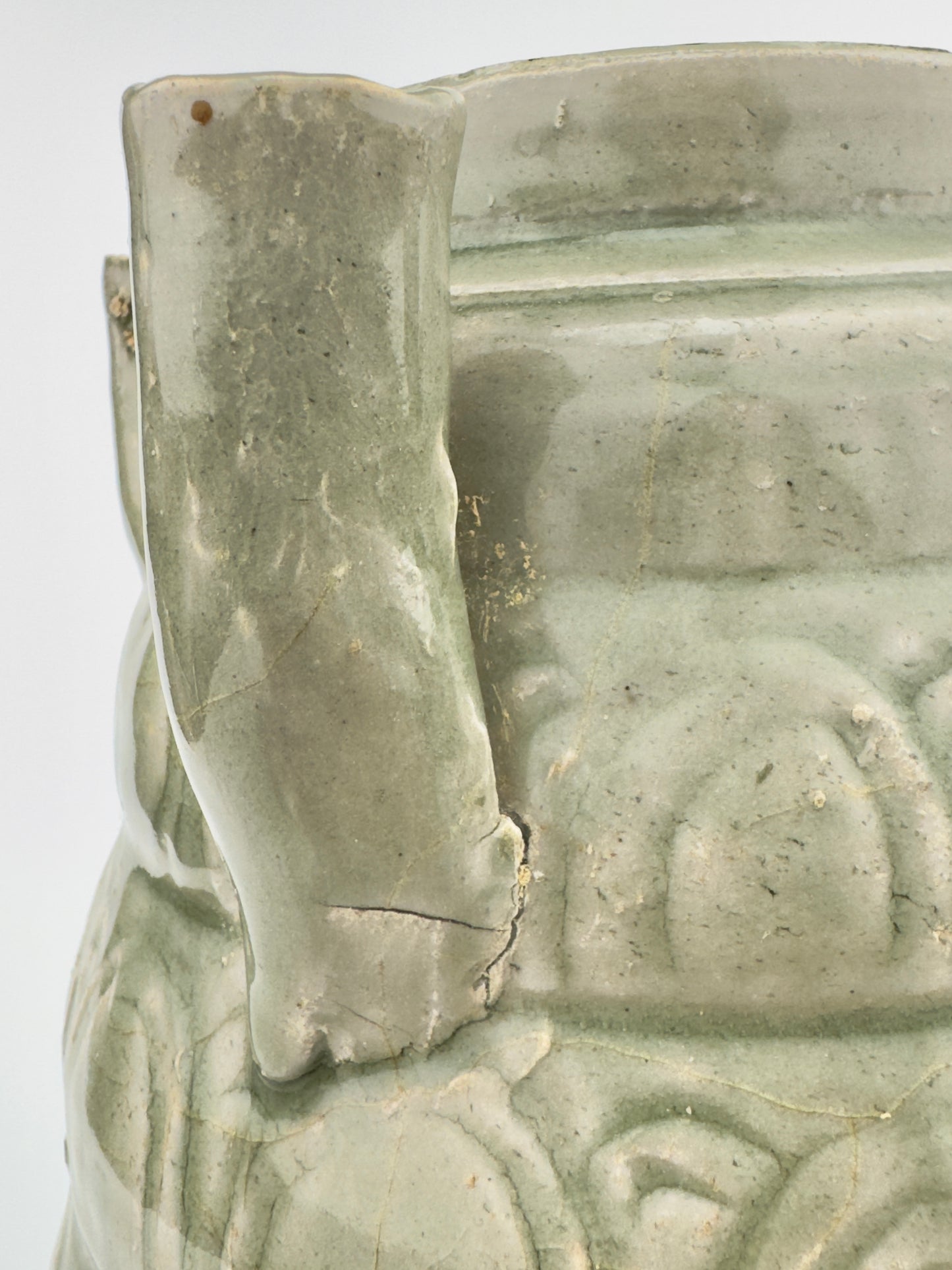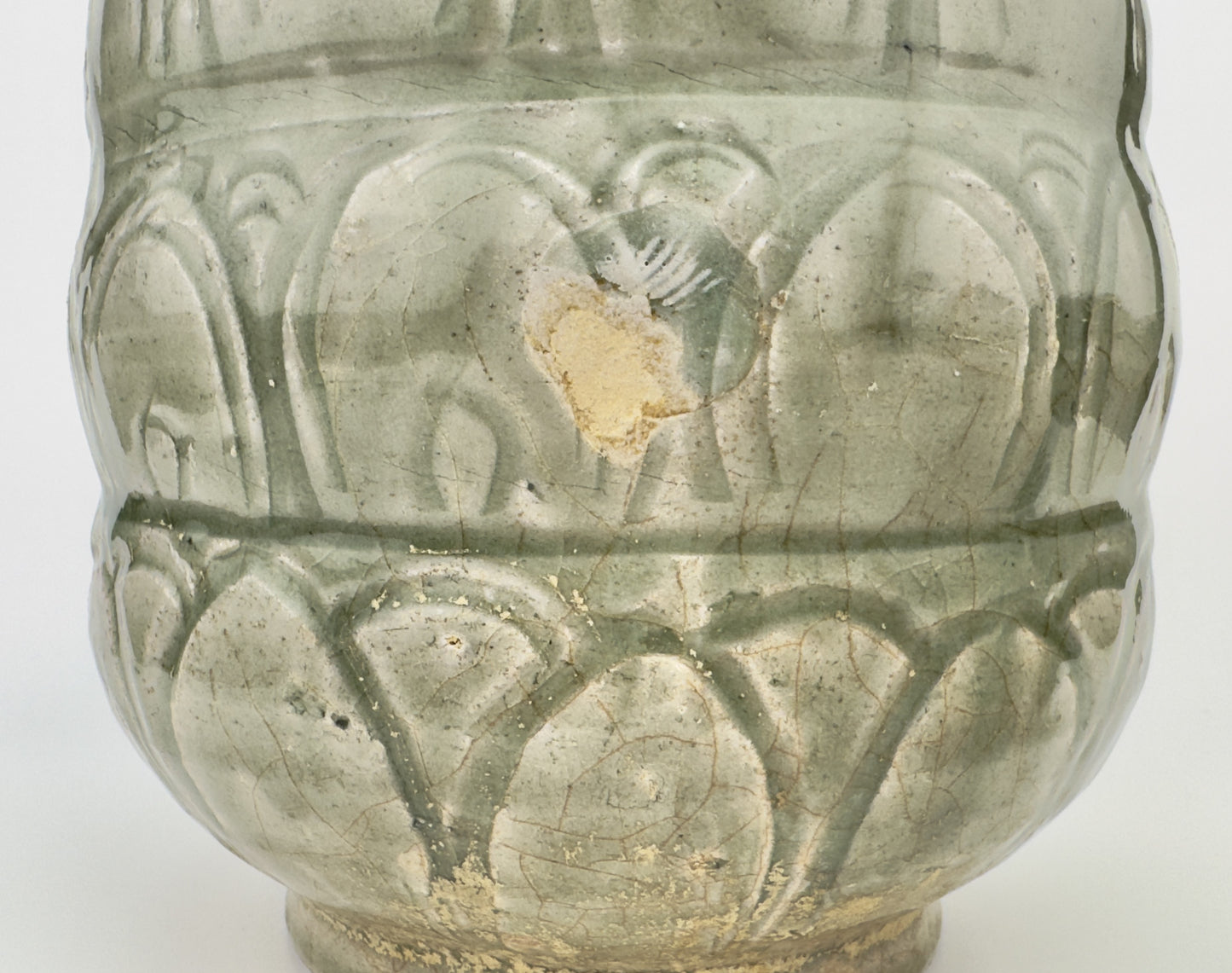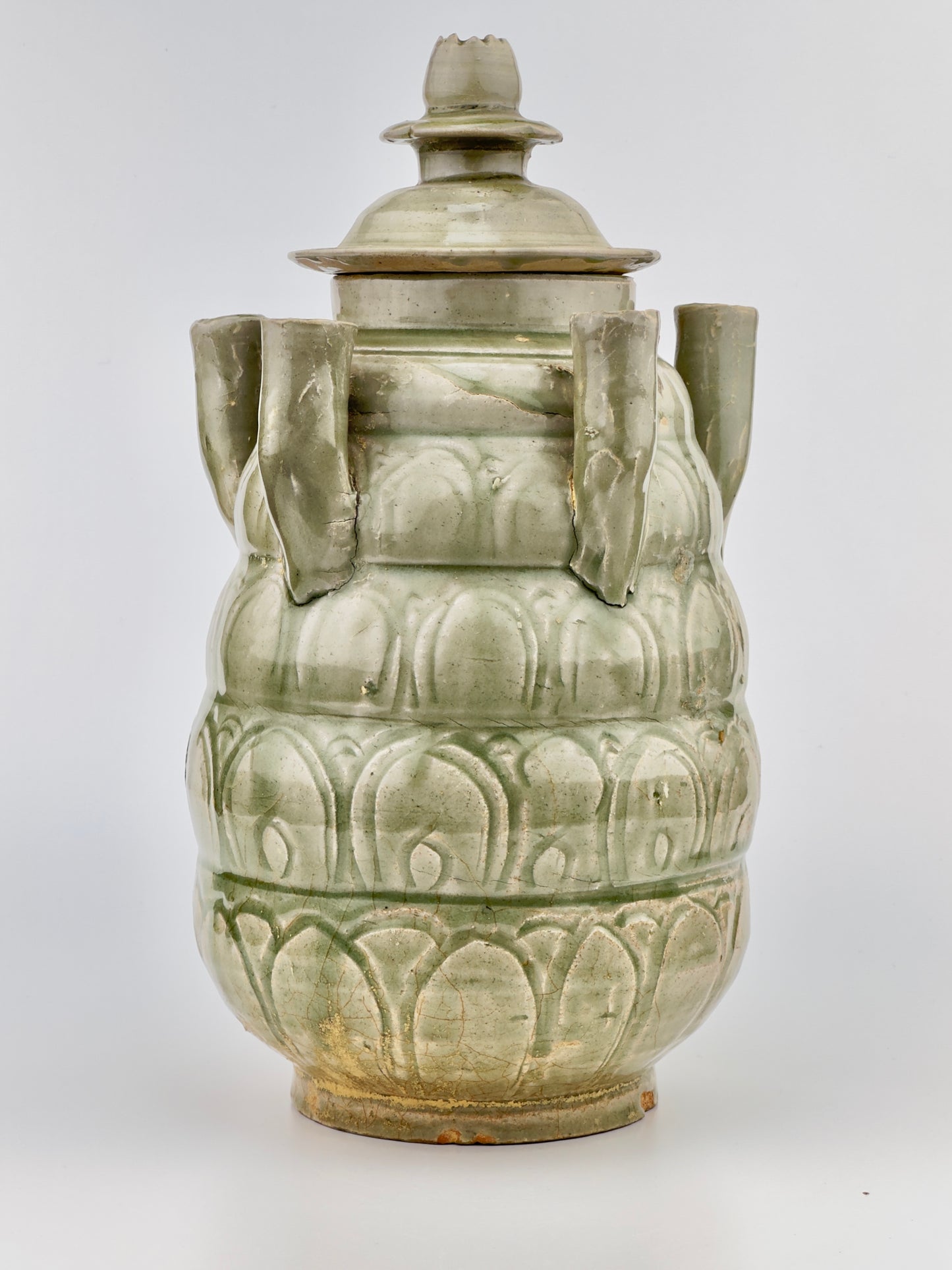AUA Oriental Art
LONGQUAN CELADON FIVE-SPOUTED JAR, SONG DYNASTY (AD 960-1279)
LONGQUAN CELADON FIVE-SPOUTED JAR, SONG DYNASTY (AD 960-1279)
Couldn't load pickup availability
Thickly potted with an ovoid body of five horizontal lobes tapering toward the top, carries both aesthetic and practical values. The jar is intricately carved with rows of upright lotus petals beneath a band of vertical lines, a design that is both decorative and symbolic. The lotus petal is a recurrent motif in Chinese art and often represents purity and spiritual enlightenment within Buddhist symbolism.
The presence of five short cylindrical spouts may suggest its use in rituals or ceremonies where multiple outpourings might symbolize abundance and the distribution of blessings or offerings. The jar-shaped finial on the cover adds a cohesive design element, echoing the shape of the jar itself and providing a harmonious visual appeal.
Period : Song Dynasty (AD 960-1279)
Type : Celadon
Medium : Longquan ware
Height : 32.0 cm
Provenance : Acquired in late 1990s from Hongkong
Reference :
1) Christies New York 10 MAY 2018 <The Collection of Peggy and David Rockefeller: Travel and Americana> - Lot 971
(Price realised : 13,750 USD / Type : Related)
https://www.christies.com/lot/a-longquan-celadon-five-spouted-jar-and-cover-6134978/?intObjectID=6134978&lid=1
2) Bonhams London 9 NOVEMBER 2017 <Fine Chinese Art> - Lot49
(Price realised : 3,750 GBP / Type : Closely Related)
https://www.bonhams.com/auction/24101/lot/49/a-longquan-celadon-glazed-five-spouted-jar-and-cover-song-dynasty-2/
* Song Dynasty Longquan Celadon
Longquan celadon refers to a type of Chinese ceramic that was famous for its distinctive glaze and high-quality craftsmanship, primarily produced during the Song Dynasty (960–1279 AD). These ceramics were made in the Longquan region of the Zhejiang province in eastern China, an area rich in the clay and mineral resources necessary for ceramic production.
The most notable characteristic of Longquan celadon is its glaze, which ranges in color from a pale blue-green to a deep olive green. This unique color comes from the iron oxide in the glaze, which, when fired in a reducing kiln atmosphere, produces the green hue. The thickness of the glaze, as well as the firing conditions, could affect the final shade and appearance of the celadon, with some pieces exhibiting a more crackled texture and others a smoother, glossier finish.
Longquan celadons were highly prized for their beauty and durability, making them popular both domestically within China and internationally. They were exported widely, reaching as far as Southeast Asia, the Middle East, and Africa, where they were often considered luxury items and treasured by various cultures.
The designs of Longquan celadon wares varied from simple and elegant forms to more elaborate decorations, including carved or incised motifs inspired by nature, such as lotus flowers, phoenixes, dragons, and foliage. Despite the variations in decoration, the emphasis was always on the harmony between form, glaze, and decoration, with the glaze playing a crucial role in enhancing the overall aesthetic appeal of the piece.
During the Song Dynasty, Longquan celadon was one of several major types of ceramics produced in China, each with its own distinctive characteristics. However, the quality and beauty of Longquan celadon made it one of the era's most celebrated ceramic types, and it continues to be highly valued by collectors and scholars today.
Share




































